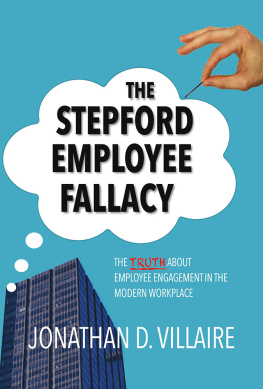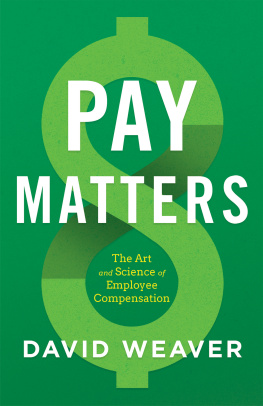Landmarks
Page list

WESTS LAW SCHOOL
ADVISORY BOARD
_________
JESSE H. CHOPER
Professor of Law and Dean Emeritus,
University of California, Berkeley
JOSHUA DRESSLER
Professor of Law, Michael E. Moritz College of Law,
The Ohio State University
YALE KAMISAR
Professor of Law, University of San Diego
Professor of Law Emeritus, University of Michigan
MARY KAY KANE
Professor of Law, Chancellor and Dean Emeritus,
University of California,
Hastings College of the Law
LARRY D. KRAMER
Dean and Professor of Law, Stanford Law School
JONATHAN R. MACEY
Professor of Law, Yale Law School
ARTHUR R. MILLER
University Professor, New York University
Formerly Bruce Bromley Professor of Law, Harvard University
GRANT S. NELSON
Professor of Law, Pepperdine University
Professor of Law Emeritus, University of California, Los Angeles
A. BENJAMIN SPENCER
Professor of Law,
Washington & Lee University School of Law
JAMES J. WHITE
Professor of Law, University of Michigan
I
WORKERS COMPENSATION AND EMPLOYEE PROTECTION LAWS
IN A NUTSHELL
Fifth Edition
By
JACK B. HOOD
Former Adjunct Professor of Law
University of Georgia School of Law
BENJAMIN A. HARDY, JR.
Associate Professor
Jacksonville State University
HAROLD S. LEWIS, JR.
Walter F. George Professor of Law
Mercer University School of Law

Mat #41144040
II
Thomson Reuters created this publication to provide you with accurate and authoritative information concerning the subject matter covered. However, this publication was not necessarily prepared by persons licensed to practice law in a particular jurisdiction. Thomson Reuters does not render legal or other professional advice, and this publication is not a substitute for the advice of an attorney. If you require legal or other expert advice, you should seek the services of a competent attorney or other professional.
Nutshell Series, In a Nutshell and the Nutshell Logo are trademarks registered in the U.S. Patent and Trademark Office.
COPYRIGHT 1984, 1990 WEST PUBLISHING CO.
West a Thomson business, 1999, 2005
2011 Thomson Reuters
610 Opperman Drive
St. Paul, MN 55123
18003139378
Printed in the United States of America
ISBN: 9780314275325
III
TO
Our wives and families:
Wife, Pat Hood; daughters Sara and Laura Hood;
and Lauras son, Walkin E. Cleage
Wife, Linda Hardy; and son, Andy Hardy
Wife, Leslie Lewis; daughter, Carmen Miller, and
her children Isabel and Gabriel
V
PREFACE
_________
Our purpose in writing this Nutshell is to provide an overview of the laws affecting employees in the workplace. It is our hope that the sections on workers compensation and employment discrimination will provide both students and lawyers with insight into the most common questions in the fields. Only brief summaries have been attempted in the chapters and sections dealing with other employee protection laws because the subject areas were too large for a more detailed explanation in a Nutshell book.
It should be noted that one hundred years ago, in 1911, Wisconsin enacted the first constitutional workers compensation law on the state level in the United States. Since then many changes have occurred in social legislation, but workers compensation has remained a central part of the employee-employer legal relationship. It appears that workers compensation will retain that important role for the foreseeable future. An excellent and comprehensive treatment of workers compensation is to be found in Larsons multi-volume treatise on the subject, and we have given some useful citations to that work at relevant points. We have also given numerous cites to Modern Workers Compensation (Westlaw VI database MWC) and to Wests Workers Compensation Guide (Westlaw database WCGD).
The following Nutshells also may be useful in the study of employee rights and protections: Barron and Dienes Constitutional Law in a Nutshell (Westlaw database CONLAWNS); Colkers Federal Disability Law in a Nutshell (Westlaw database FEDDISABLNS); Collins Section 1983 Litigation in a Nutshell (Westlaw database SEC1983NS); Conisons Employee Benefit Plans in a Nutshell (Westlaw database EMPBENPLNNS); Covington and Deckers Employment Law in a Nutshell (Westlaw database EMPLAWNS); Frolik and Kaplans Elder Law in a Nutshell (Westlaw database ELDERLAWNS); Leslies Labor Law in a Nutshell (Westlaw database LABLAWNS); Maraist and Galligans Admiralty in a Nutshell (Westlaw database ADMIRALTYNS); Nolans Labor and Employment Arbitration in a Nutshell (Westlaw database EMPARBNS); Players Federal Law of Employment Discrimination in a Nutshell (Westlaw database EMPDISCRNS); and Weissbrodts and Danielsons Immigration Law and Procedure in a Nutshell (Westlaw database IMLPRONS).
Citations to legislation, cases, materials, websites, works, and/or treatises have been added in most of the chapters and sections so that one can further pursue the specific topics and issues more easily.
We would like to acknowledge and thank our research assistant and University of Virginia Law School student, Lauren A. Simpson, of Birmingham, VII Alabama. We further acknowledge and thank Louis H. Higgins, Editor in Chief of West Academic Publishing in Eagan, Minnesota. We also express our appreciation to the law libraries at Mercer University, Cumberland School of Law of Samford University, and the University of Alabama.
JACK B. HOOD BENJAMIN A. HARDY, JR. HAROLD S. LEWIS, JR. |
June 1, 2011
Birmingham, Alabama
XLXI
WORKERS COMPENSATION AND EMPLOYEE PROTECTION LAWS
IN A NUTSHELL
Fifth Edition
PART 1
HISTORICAL BACKGROUND OF COMPENSATION LEGISLATION
CHAPTER 1
EMPLOYMENT RELATED ACTIONS AND LEGISLATION
A. EMPLOYEE COMMONLAW REMEDIES
The common law imposed a number of duties on employers for the protection of their employees, and an action existed for the breach of these duties; however, as a practical matter, the common law failed to provide adequate remedies for such injuries and deaths. The common-law duties imposed upon the master were as follows:
(1) to provide a safe place to work;
(2) to provide safe appliances, tools, and equipment;
(3) to give warnings of dangers of which the employee might reasonably be expected to remain in ignorance;
(4) to provide a sufficient number of fit, trained, or suitable fellow servants to perform assigned tasks; and
(5) to promulgate and enforce rules relating to employee conduct that would make the work safe.
Employee remedies based upon a breach of the foregoing duties were restricted by the unholy trinity of common-law defenses: (1) fellow-servant doctrine; (2) contributory negligence; and (3) assumption of risk. See Prosser and Keeton on Torts 80 (5th ed. 1984).
1. FELLOWSERVANT DOCTRINE
Unless there was an express contract, the rule at common law was that a master was not liable to a servant for injuries due to the negligence of a fellow servant. Priestley v. Fowler , (1837) 150 Eng. Rep. 1030 (Exch.); see Murray v. South Carolina Rail Road Co ., 26 S.C.L. 385 (1 McMul.) (1841). The doctrine provided that the negligence of a co-employee was not to be imputed to the master; of course, the injured employee, for what it was worth, could still sue a co-employee. The fellow-servant rule was not founded in abstract or natural justice, and the rule was an exception to the rule of agency and the general rule that a master was responsible for injuries caused to third persons by the negligence of servants who were acting within the scope of their employment. In support of the fellow-servant doctrine, it was said that the negligence of a fellow servant was one of the risks incident to employment, and the risk was assumed by the servant as an implied term of the employment contract. Public policy in support of the doctrine was to the effect that the rule would make servants careful and watchful with regard to each other, thus promoting greater care in the performance of their duties.










